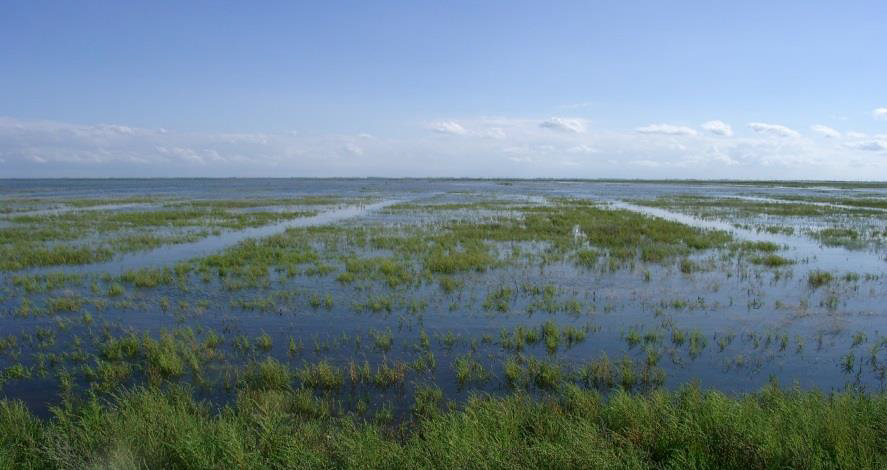Fachbereichsseminar 12.01.2018, 14.00 Uhr, HS 414 (1.OG, NAWI)
The value of salt marshes as habitats for rare plant and animal species has been recognized for several decades. The conditions for salt marsh restoration have been defined taking only nature conservation arguments in account. Climate change and expected sea-level rise led to other points of view concerning coastal defence. Salt marshes especially with natural vegetation and dendritic ditch structures seem to be an appropriate natural protection. The majority of potential salt marsh areas along the North Sea are under strong anthropogenic influence. Most of these areas have been embanked or drained for agricultural use for centuries. With the detection of salt marshes as natural wave breakers, restoration measures along the North Sea were initiated not only for creating more habitats for rare species, but additionally for creating a more extended foreland which is able to decrease wave energy. An important condition is that the salt marsh can grow up with the sea-level rise. Therefore, the size of the salt marsh is decisive. There are many factors achieving a successful restoration. The individual position of a salt marsh might be the most important one.Today there is not enough data to answer all questions concerning the suitable way of salt marsh restoration. Suggestions and facts are presented here taking the de-embankment of the summer polder on Langeoog Island in 2003/2004 as a case study. Since 2002 the succession of the vegetation patterns and to some extent also sedimentation was monitored within this area. The impact of regular tidal inundations on this salt marsh with strong fresh water influence serves as an example what might happen when former embanked areas become subject to salt water influence, due to sea-level rise. (Picture: Summer polder on Langeoog Island inundated during high tide)
Prof. Ulrike Berninger, Dr. Andreas Tribsch und Univ.-Prof. Dr. Stefan Dötterl
Gäste sind wie immer herzlich willkommen!
Schedule of the SEMINAR Series Dept. Ecology & Evolution, Oct. 2017 – July 2018





